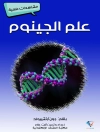Introducing Proteomics gives a concise and coherent overview
of every aspect of current proteomics technology, which is a
rapidly developing field that is having a major impact within the
life and medical sciences.
This student-friendly book, based on a successful course
developed by the author, provides its readers with sufficient
theoretical background to be able to plan, prepare, and analyze a
proteomics study.
The text covers the following:
* Separation Technologies
* Analysis of Peptides/Proteins by Mass Spectrometry
* Strategies in Proteomics
This contemporary text also includes numerous examples and
explanations for why particular strategies are better than others
for certain applications. In addition, Introducing
Proteomics includes extensive references and a list of relevant
proteomics information sources; essential for any student.
This no-nonsense approach to the subject tells students exactly
what they need to know, leaving out unnecessary information. The
student companion site enhances learning and provides answers to
the end of chapter problems.
‘I think this book will be a popular and valuable resource for
students and newcomers to the field who would like to have an
overview and initial understanding of what proteomics is about. The
contents are well organized and address the major issues.’
–Professor Walter Kolch, Director, Systems Biology
Ireland & Conway Institute, University College Dublin
Companion Website
href=’http://www.wiley.com/go/lovric’>www.wiley.com/go/lovric
表中的内容
Preface ix
Acknowledgements xi
1 Introduction 1
1.1 What Are the Tasks in Proteomics? 1
1.2 Challenges in Proteomics 5
1.3 Proteomics in Relation to Other -omics and System Biology 10
1.4 Some General Applications of Proteomics 12
1.5 Structure of the Book 18
References 18
2 Separation and Detection Technologies 21
2.1 Introduction to Experimental Strategies in Proteomics 21
2.2 Gel-Based Separation 31
2.3 Visualization and Analysis of Proteins/Peptides in Gels 40
2.4 Gel-Free Separation Technologies 54
2.5 Visualization of Proteins/Peptides from Hyphenated Methods 74
2.6 Chips in Proteomic Applications 81
References 81
3 Analysis of Peptides/Proteins by Mass Spectrometry 83
3.1 Basic Principles of Mass Spectrometry for Proteomics 83
3.2 Ionization Methods for Small Amounts of Biomolecules 101
3.3 Mass Analyzers and Mass Spectrometers 116
3.4 Concluding Remarks on Mass Analyzers for Proteomics 170
References 170
4 Analysis and Interpretation of Mass Spectrometric and Proteomic Data 173
4.1 Introduction 173
4.2 Analysis of MS Data 174
4.3 Analysis of MS/MS Data 192
4.4 Quantification of LC MS and MS/MS Data from Complex Samples 209
4.5 Bioinformatic Approaches for Mass Spectrometric Proteome Data Analysis 213
References 218
5 Strategies in Proteomics 221
5.1 Imaging Mass Spectrometry 221
5.2 Qualitative Proteomics 223
5.3 Differential and Quantitative Proteomics 234
5.4 Analysis of Posttranslational Modifications 257
5.5 Interaction Proteomics 261
5.6 Proteomics as Part of Integrated Approaches 266
References 271
Index 275
关于作者
Josip Lovric is the author of Introducing Proteomics: From Concepts to Sample Separation, Mass Spectrometry and Data Analysis, published by Wiley.












